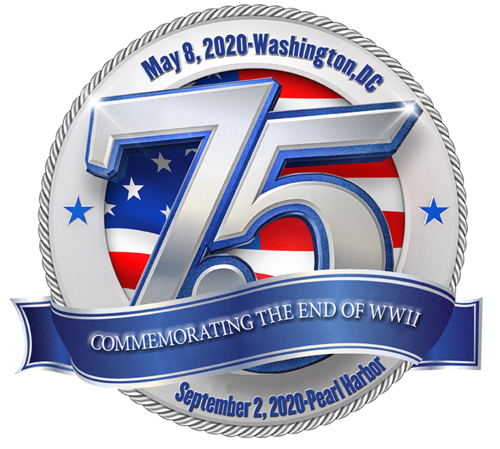The Events Leading to the Attack on Pearl Harbor
Hawaii Prepares
In 1940, Congress authorized the first peacetime military draft in U.S. history and authorized the president to mobilize National Guard units. Those included the 298th and 299th Infantry regiments in Hawaii. Meanwhile, Navy and Army installations in Hawaii underwent rapid expansion. The 1940 U.S. Census found more than 37 percent of the Territory of Hawaii’s residents were ethnic Japanese – three-fourths of them born in America. Young leaders of the Japanese community took pains to demonstrate their loyalty to America and build support among other Hawaii residents. As war loomed, however, suspicions grew and military intelligence, the FBI and Honolulu police gave closer scrutiny of the local Japanese community.
[ Click to Enlarge ] Waikiki Beach – The Moana Hotel is on the right and Diamond Head is in the distance. Circa 1940.
Code Orange for Japan
In constantly revised U.S. war plan, “Orange” was code for Japan. Before World War II, War Plan Orange explored the likelihood of a surprise attack by Japan. However, such an attack was expected in the Philippines or elsewhere in the far western Pacific. The plan was based on the well-established premise that any decisive battle would be fought at sea. Admiral Kimmel embraced this belief. He expected the U.S. Fleet would leave from Pearl Harbor to confront Japan’s fleet far from Oahu.
[Click to Enlarge] This map depicts Pearl Harbor and its entrance. Note the inshore patrol area where the incident with the Japanese midget submarine would take place at 6:30 AM, December 7, 1941.
Age of the Battleship
““There are many who believe the day of the battleship is over. It is my opinion those who hold this view don’t know what they are talking about.””
A symbol of national power and naval dominance, battleships are considered the mightiest weapons of war. The United States, Japan, and other nations supported Pratt’s view. They had negotiated treaties based on numbers of naval warships. But despite their great firepower and armor, battleships were vulnerable to torpedoes and mines – and aircraft.
“Aircraft carriers should not protect battleships; it should be the other way around. Japan should gather all her carriers into one squadron for massive air striking power.”
—Commander Mitsui Fuchida, Akagi Air Group, Imperial Japanese Navy
On November 12, 1940, British carrier planes executed a low-level nighttime torpedo attack against the Italian fleet at the harbor in Taranto, Italy, sinking one battleship and heavily damaging two. Japanese naval aviators and the U.S. Navy both took a keen interest. Secretary of the Navy Frank Knox asked the U.S. Special Naval Observer in London to “learn more details of how the attack was carried out, especially as to what extent aerial torpedoes were used.”
[Click to Enlarge] The battleship Arizona makes its way through the heaving seas of the Pacific. This photo was taken as the battleship steamed from San Pedro to San Francisco in late April 1932.
Last Efforts for Peace
By late November of 1941 neither side is hopeful. In exchange for a limited lifting of sanctions, the United States demanded that Japan withdraw its troops from China and sever its ties with Germany and Italy. Special envoy Saburo Kurusu lamented, “If this is the attitude of the American government, I don’t see how an agreement is possible. Tokyo will throw up its hands at this.”
Japan demanded the United States end its sanctions and its support to China in exchange for Japan withdrawing its forces from Indochina. American and Japanese diplomats will still be negotiating these issues on the morning of December 7, 1941 as the attack unfolds on Pearl Harbor.
[Click to Enlarge] Japanese ambassador Kichi Saburo Nomura and special envoy, Saburo Kurusu, leave the White House in late November 1941.
The Reluctant Admiral and the Strike Force
Admiral Isoroku Yamamoto
Descended from a samurai family, Admiral Isoroku Yamamoto grasped the strategic importance of naval aviation. He made good use of it when he conceived his plan to take the U.S. Pacific Fleet out of action. Threatening to resign, Yamamoto convinced the Naval General Staff to adopt his plan to attack Pearl Harbor. Yamamoto had studied and worked in the United States. While opposed to war with America, he felt obliged to pursue a “course that is precisely the opposite of my personal views.” Although Yamamoto was an avid gambler, he did not like the odds of war against the United States. He believed Japan could not win the long run. But if war came, he was determined to strike first and hard.
““In the east [Hawaii] the American fleet will be destroyed. The American lines of operation and supplies [to] the Orient [will] be cut. The enemy forces will be intercepted and annihilated. Victories will be exploited to break the enemy’s will to fight.””
To attack Oahu, the Japanese Navy assembled the most powerful aircraft carrier force with the greatest concentration of naval air power in history. The attack required painstaking planning, rigorous training, and new technologies – and the element of surprise.
A Japanese torpedo bomber rolls down the deck in the predawn light on December 7, 1941. Crewmembers give “Banzai” salute from the carrier Soryu.
On November 26, 1941, the Carrier Striking Force was to set sail under strict radio silence. To avoid detection, the fleet of more than 30 ships, including 6 carriers, charted a route far north of normal shipping lanes in the Pacific Ocean. A separate force of submarines departed Japan encircled Oahu to prevent a U.S. counterattack.
““If the United States doesn’t ease up on these sanctions against Japan, the military men in my country are going to be driven to do something desperate.””


